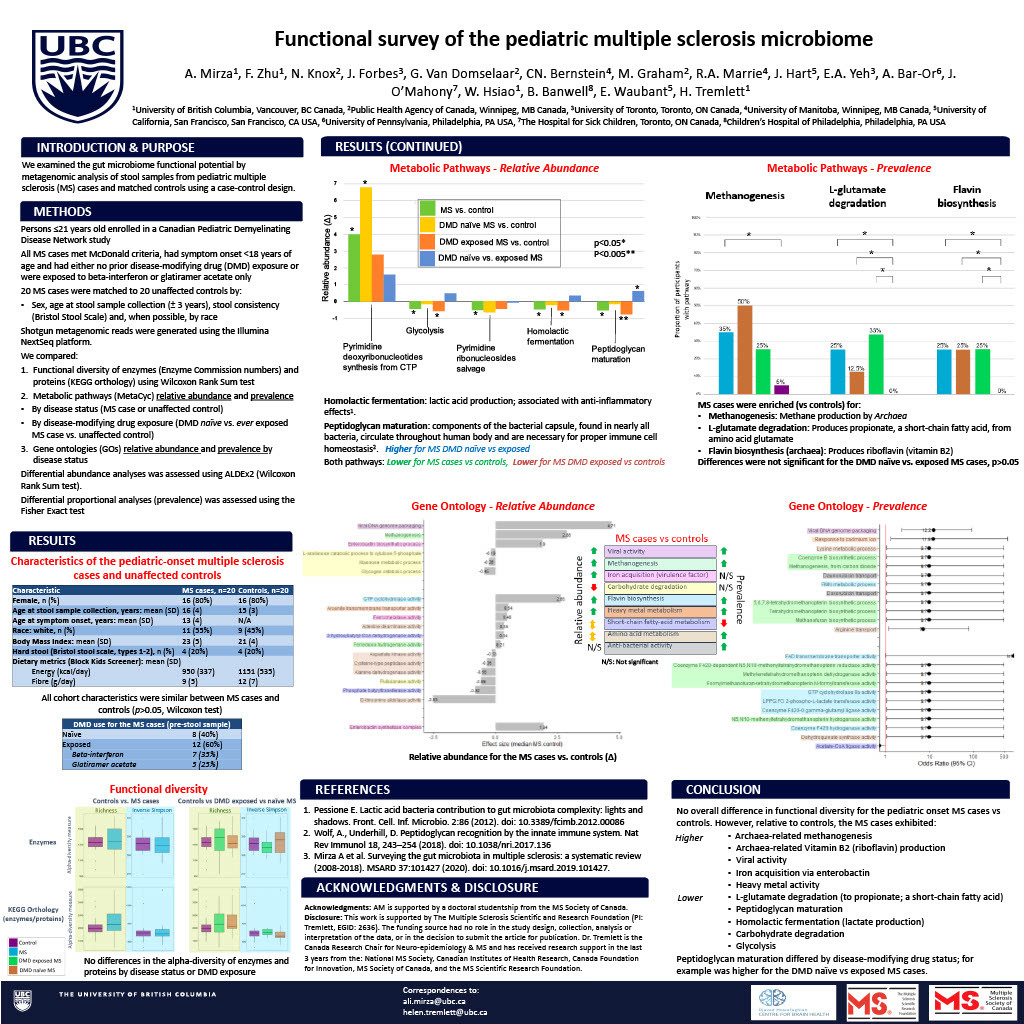Functional survey of the pediatric multiple sclerosis microbiome
Abstract
Objective:
Metagenomic sequencing reveals the functional potential of the Multiple Sclerosis (MS) gut microbiome. We examined the gut microbiome functional potential by metagenomic analysis of stool samples from pediatric MS cases and controls.
Methods:
Persons ≤21 years old enrolled in the Canadian Pediatric Demyelinating Disease Network who provided a stool sample were included for study. Twenty MS cases were matched to 20 non-affected controls by sex, age (± 3 years), stool consistency (Bristol Stool Scale, BSS) and, when possible, by race. Shotgun metagenomic reads were generated using the Illumina NextSeq platform and assembled using MEGAHIT. Metabolic pathway analysis was used to compare the gut microbiome between cases and controls, as well as cases by DMD status. Gene ontology classifications were used to assess α-diversity and differential abundance analyses (based on the negative binomial distribution).
Results:
The MS cases were aged 13.6 mean years at symptom onset. On average, MS cases and controls were 16.1 and 15.4 years old at the time of stool collection and 80% of each group were girls. Eight MS cases were DMD naïve. Richness of gene ontology classifications did not differ by disease status or DMD status (all p>0.4). However, differential analysis of metabolic pathways indicated that the relative abundance of tryptophan degradation (via the kynurenine pathway; LFC 13; 95%CI: 8–19; p<0.0005) and cresol degradation (LFC 19; 95%CI: 13–25; p<0.0001) pathways were enriched for MS cases vs controls. Differences by DMD status were also observed, e.g., choline biosynthesis was enriched in DMD exposed vs naïve MS cases (LFC 21; 95%CI: 12–29; p<0.0001).
Conclusions:
We observed differences in the functional potential of the gut microbiome of young individuals with MS relative to controls at various metabolic pathways, including enrichment of pathways related to tryptophan and metabolism of industrial chemicals. DMD exposure affected findings, with enrichment of pathways involved in promoting CNS remyelination (e.g., choline).

